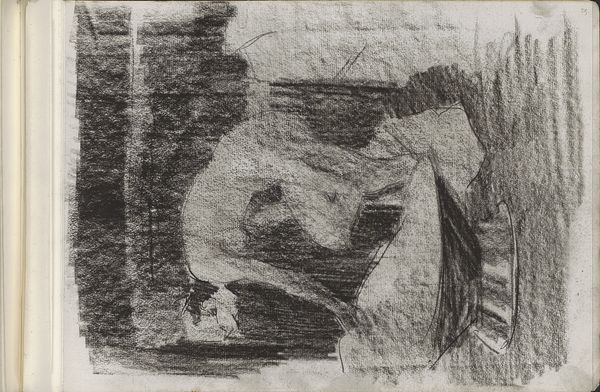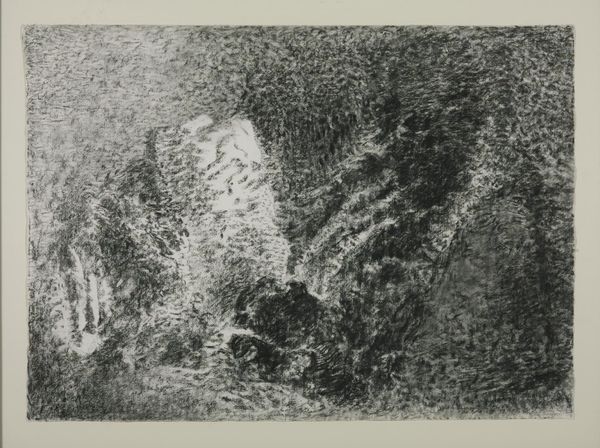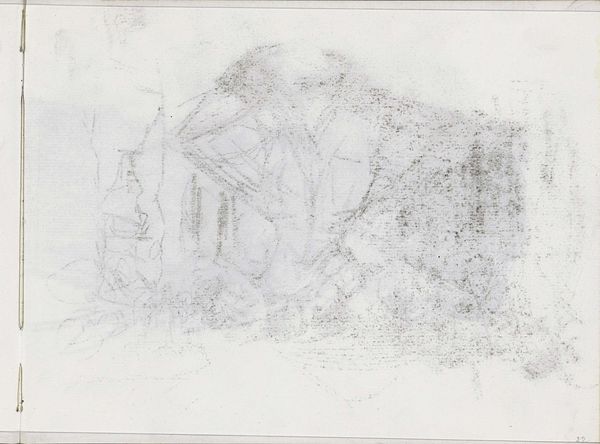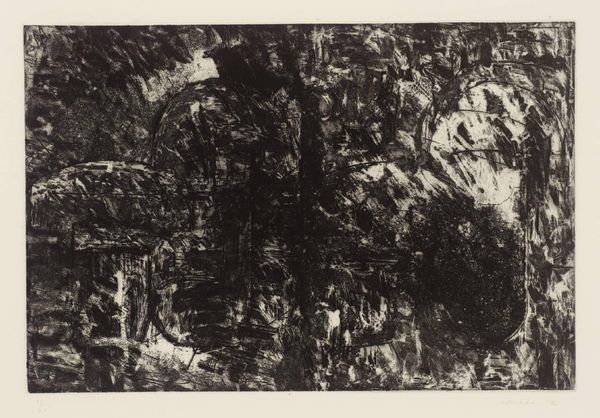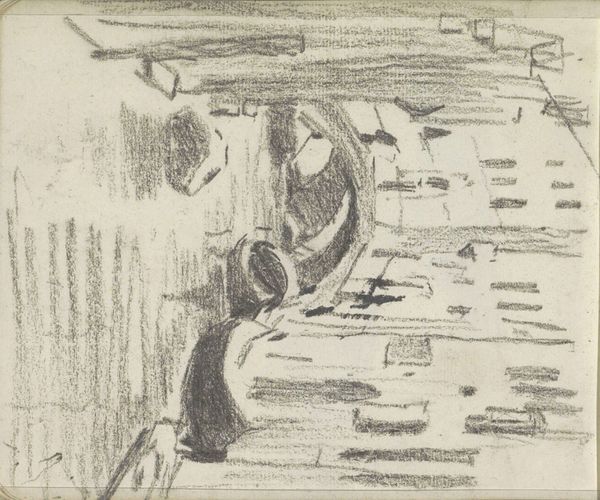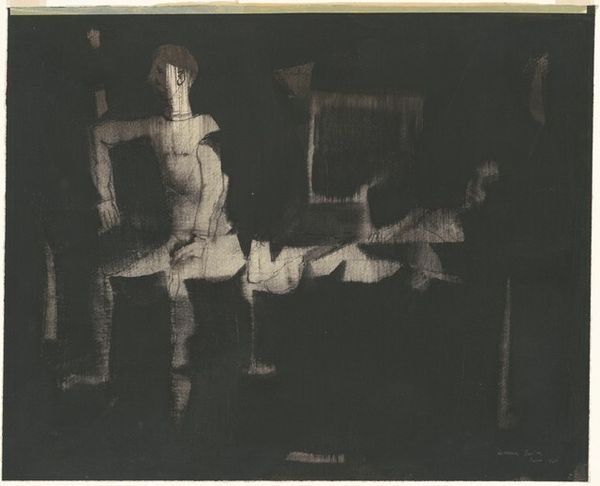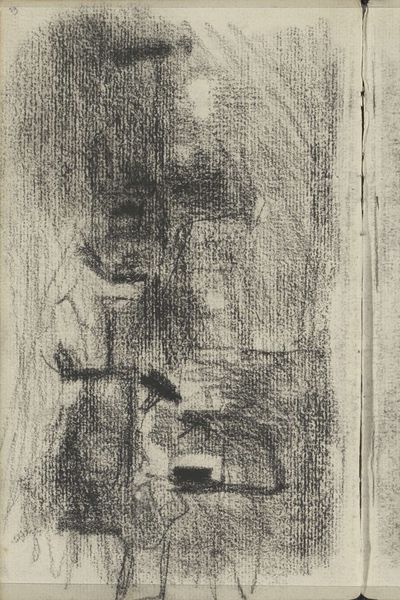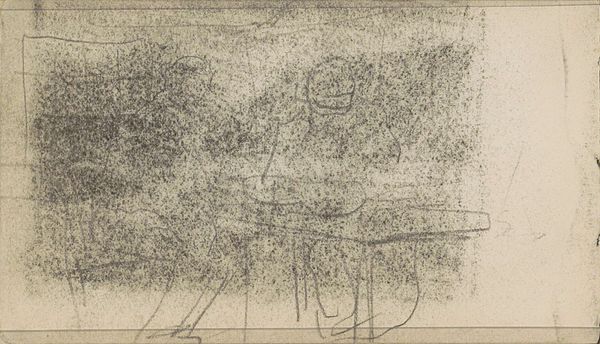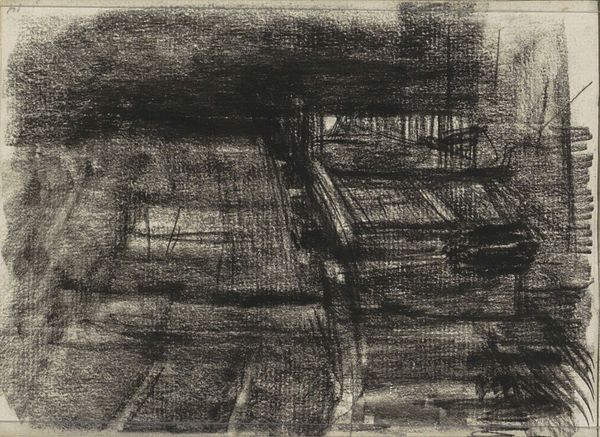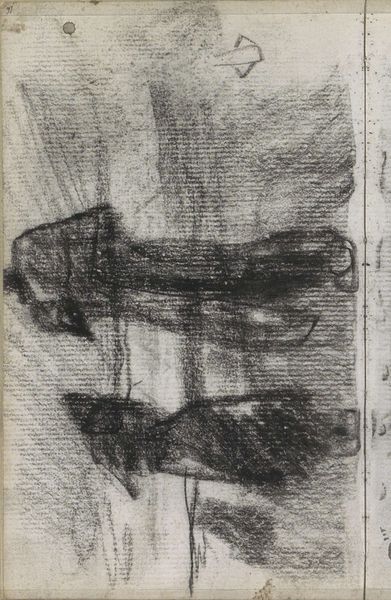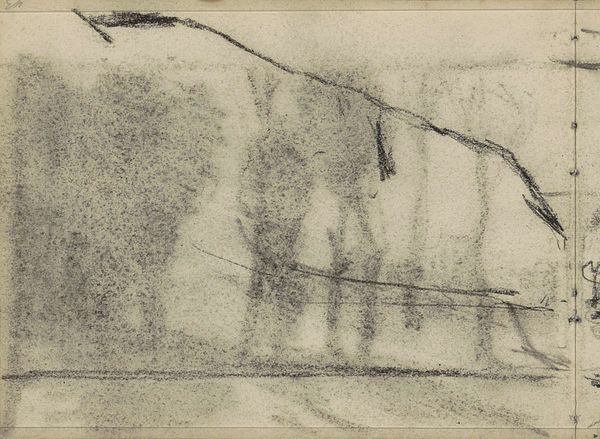
Studie, mogelijk van figuren bij een gebouw of kraam c. 1886 - 1890
0:00
0:00
georgehendrikbreitner
Rijksmuseum
#
pencil drawn
#
amateur sketch
#
light pencil work
#
pencil sketch
#
incomplete sketchy
#
hand drawn type
#
personal sketchbook
#
pen-ink sketch
#
sketchbook drawing
#
sketchbook art
Copyright: Rijks Museum: Open Domain
Curator: Welcome to the Rijksmuseum. We are standing before George Hendrik Breitner's "Studie, mogelijk van figuren bij een gebouw of kraam," created around 1886 to 1890. Editor: My first impression is of transience. The rough lines and incomplete forms give a sense of something quickly captured, fleeting. The medium accentuates it all. Curator: Indeed. Let’s consider those very formal aspects. The sketch appears almost cubist in its reduction of forms to near-geometric shapes. Note the bold, contrasting areas of light and shadow defining the architecture. It evokes a semiotic tension between representation and abstraction, wouldn’t you agree? Editor: It is definitely the materiality that draws me in. The humble pencil on paper emphasizes process, immediacy. Think about the act of sketching outdoors, the physical labor of rendering what Breitner observes. This isn't some high-art oil painting in a studio; it is closer to craft, a direct record of interaction with the environment. Curator: While I appreciate your focus on materiality, let us not dismiss the underlying structure. The strategic arrangement of light and shadow dictates the piece. If you look at how he used these, he essentially designed entry points and how your eyes travels from one element to another on this paper. The perspective, though gestural, still informs our understanding of space, which he managed very skillfully. Editor: It is also valuable to consider what’s not there, and not only in what we see physically rendered. The open areas, the negative space, provide balance, right? They imply movement of the body, of course, with their placement hinting at locations and positions in order of how he was perceiving reality at this moment. Think about the cost of materials too—paper and pencil are economical and easily accessible. Does that impact his subject? Curator: Certainly, the work does highlight that inherent dialectic, if only as a result of its medium, scale, and construction. Breitner seems to be less involved with creating "high art" as it were and instead captured a single, and as you so rightfully observe, transient impression. The structural framework that gives shape to this work cannot be dismissed either. It showcases the way he used contrasting form as an expression technique, and this in its core elevates it beyond being just a study. Editor: Agreed. So perhaps, rather than separate endeavors of making versus seeing, these are always intertwined considerations. Each sketch represents a single lived moment. The economic choices influence artistic direction just as his expression defined it all.
Comments
No comments
Be the first to comment and join the conversation on the ultimate creative platform.
